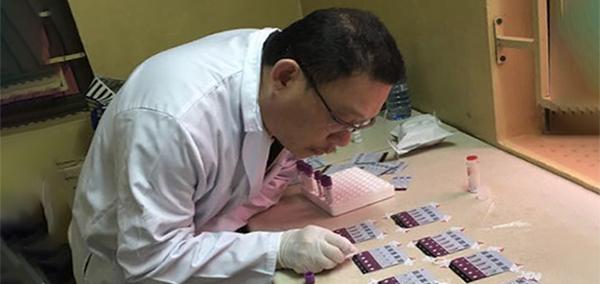From the printer's press to the patient
Resist the urge to re-invent the wheel, and your products could be on the market more quickly, advises Xander Sim of Cell ID Pte Ltd.
When it comes to developing new diagnostic tools, Singapore-based medical technology (med-tech) firm Cell ID Pte Ltd has a strategy to leapfrog the competition. Instead of creating new technologies from scratch, it adapts mature technologies for novel applications, cutting development costs and achieving market readiness in double-quick time.
In the five years since it was founded in 2013, Cell ID has filed for intellectual property rights to seven inventions in more than ten countries each. Among these inventions are a pregnancy test kit and a single-use device for the detection of the human immunodeficiency virus. A molecular probe for the early diagnosis of breast cancer has also been discovered through one of its technology platforms.
Furthermore, by partnering widely with clinicians, researchers and other industry players, Cell ID identifies areas of critical need in the biomedical sector and moves strategically to fill those niches. Xander Sim, co-founder and chief technology officer of Cell ID, shared with us how an openness to collaboration with local and overseas partners has helped his company grow from strength to strength.
1. What is the core competency of your company?
We are innovative and constantly thinking out of the box as we develop our disease diagnostics technologies. At Cell ID, we always put ourselves in the position of our product’s or technology’s intended users. It helps our researchers to empathise, innovate, create and develop economical and user-friendly innovations.
2. Why do you think open innovation is important in the current business climate?
In today’s information age, product and technology life-cycles are short. Hence, the shortest time-to-market with the lowest development cost is of utmost importance, especially for a young med-tech start-up company like Cell ID. To compete with the big market players in this space, Cell ID believes open innovation is the best approach.
3. What convinced you that open innovation was the right way to grow your business?
Cell ID was founded on the principle of “What we can buy, we don’t make ourselves.” This means working with external partners and having an open mind, and we have made this practice part of our routine. Moreover, during the development phase of our products, we employ standardised, off-the-shelf approaches to achieve economies of scale and save resources and time.
We strongly believe in the concept of recycling mature technologies. For example, we have repurposed large format printing, which has traditionally been used in the publishing industry, for new applications, such as our printed bio-sensors and heaters. Once again, this requires collaborating to make the most of existing methods for new innovations.
IPI has played a significant role in Cell ID’s growth and expansion over the years. It has supported our product and technology platform development by helping to scout the best industrial partners and service providers both locally and overseas. It promoted in-depth engagement with industrial partners that resulted in a win-win scenario for all parties involved.
4. How do you encourage a culture of open innovation in your company?
Cell ID has an R&D team consisting of members from various educational and scientific backgrounds. Each of them brings to the table a wealth of knowledge and skillsets. This allows us to encourage cross-disciplinary learning within the team.
However, we do acknowledge that we cannot build a team with complete knowledge of everything, hence the deep-rooted culture of open innovation within the company, where we are willing to seek the expertise of external industry partners.
5. What are some lessons you have learnt in the process of engaging in open innovation?
Although people often think of innovation as creating new things from scratch, we are strong believers that you don’t need to reinvent the wheel every time. Take our approach, for instance. We adopt mature technologies and adapt them to our diagnostic applications. This helps us to reduce the learning curve of the technology, while reducing the time to market and lowering costs. We consider this to be one of the best practices that we have developed while engaging in open innovation.
Additionally, finding the right partners with the right mindset for collaboration is, and probably will remain as, the most important and difficult process of engaging in open innovation. This is for the simple reason that each of the parties may have their own agenda for partnering one another. Therefore, sourcing for partners who share common goals and interests is key to successfully adopting open innovation.

